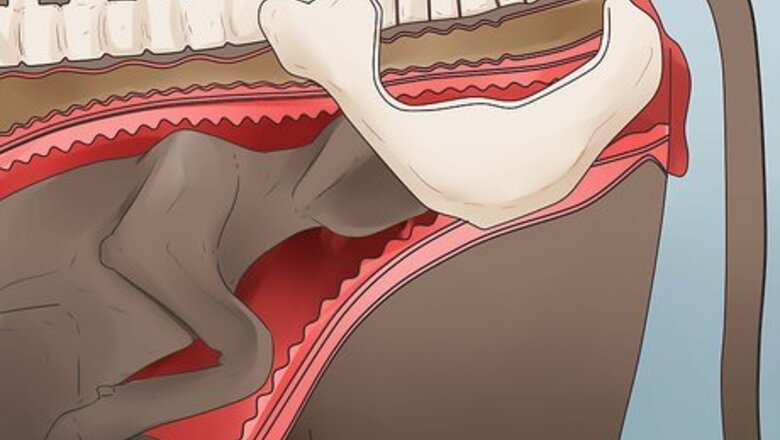
views
Note: Birthing is also called Parturition.
Endocrine and Physiological Steps of Parturition
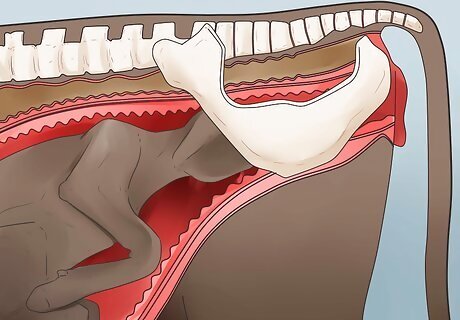
Stage 1: Initiation of myometrial contractions (removal of progesterone block). The fetus becomes stressed because it approaches the inherent space limitations of the uterus, resulting in the fetus's anterior pituitary gland to release ACTH (Adrenal corticotropic hormone). Fetal cortisol promotes the synthesis of three enzymes (17alpha Hydroxylase, 17-20 Desmolase, and Aromatase) to convert progesterone to estradiol. Estradiol encourages myometrial (or uterine) contractions become more active and contractions are more noticeable. Secretory activity also increases in the vagina and cervix, with the production of mucus providing lubrication for the easier passage of the fetus. Mucus secretion also helps wash out the cervical seal of pregnancy. Fetal corticoids also cause the placenta to synthesize PGF2alpha to help eliminate the progesterone block. Corpus luteum starts to regress, facilitating the decline in progesterone. Relaxin, a glycoprotein, is produced by PGF2alpha and stimulates the softening of the connective tissue in the cervix and promotes elasticity of the pelvic ligaments, allowing easier passage of the fetus. Calf fetus rotates so that the front feet and head are positioned towards the rear (posterior) of the dam. Contracting uterus begins to push the fetus towards the cervix, applying pressure to the cervix. Pressure on the cervix activates pressure-sensitive neurons located in the cervix that synapse in the spinal cord and eventually synapse with oxytocin producing neurons in the hypothalamus. Oxytocin acts to facilitate myometrial contractility initiated by estradiol and PGF2alpha. As pressure on the cervix increases, oxytocin secretion increases; force of contraction of the myometrial smooth muscle begins to peak. Fetus enters cervical canal; first stage complete.
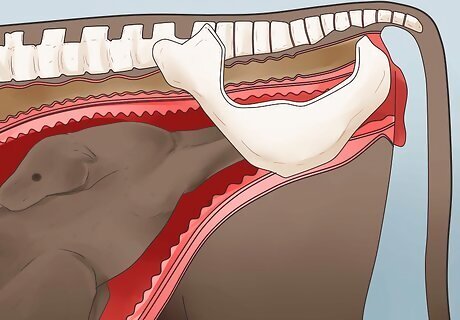
Stage 2: Expulsion of the fetus. Strong myometrial and abdominal contractions continue until the calf is expelled from the birth canal. The feet and head of the fetus put pressure on the fetal membranes until they rupture, resulting in a substantial loss of amniotic and allantoic fluid. Fetus becomes hypoxic (or deprived of adequate oxygen levels), and this hypoxia promotes fetal movement which in turn promotes further uterine contractions.
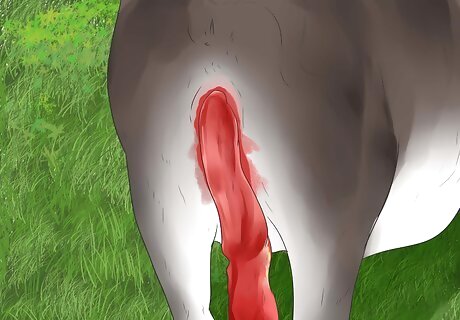
Stage 3: Expulsion of fetal membranes. The car-uncles (or chronic villi) becomes dislodged from the uterine wall This release is believed to be brought about by powerful vasoconstriction of arteries in the villi. Further myometrial contractions, as well as the beginning of the involution of the uterus, help expel the fetal membranes.
Physical Signs of Parturition
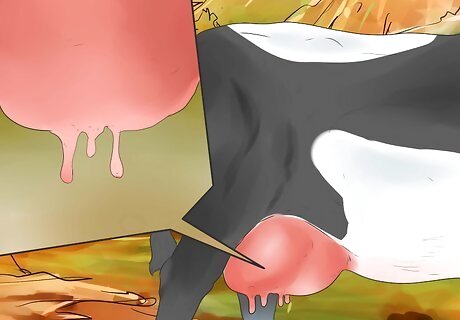
Freshening. The first signs of parturition in cows and heifers is that most will start to freshen (or bag up or start lactating) before birth. This may range from 24 hours before birth to even 2 to 3 weeks before birth. The teats of the cow will start to fill up, looking full and distended, with the teat plugs often starting to come out. Most cows will show these signs 24 hours prior to calving.
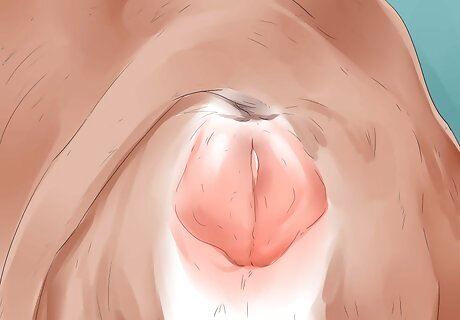
Loose and swollen vulva. The vulva of the cow or heifer gets quite swollen and large. It also tends to look very loose, with more creases forming along the sides and underneath the vulva than normally.
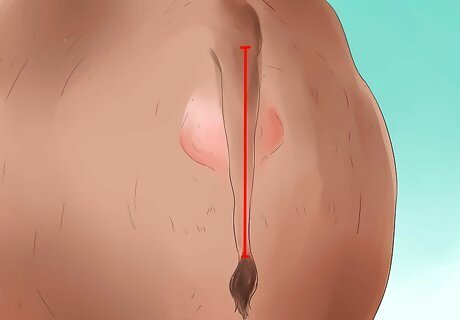
Sinking of the tailhead. The pelvic bones begin to widen out (as a result of the hormone relaxin, as described above), and the tailhead sinks lower into the hooks of the pelvis.
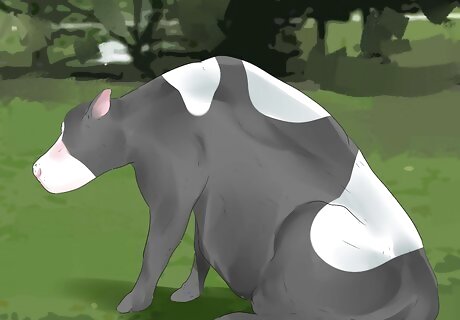
Noticeable straining and discomfort. The first signs of labour occur when the cow usually stops to strain, or may kick at her belly because of the discomfort the contractions are causing her. She will also be laying down and getting up a lot, and be quite fidgety.
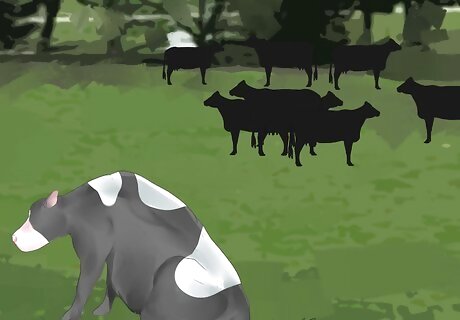
Aloofness. A cow or heifer will usually find a secluded place away from the herd to give birth, whether it's in a grove of trees or in a corner of a corral or pasture.
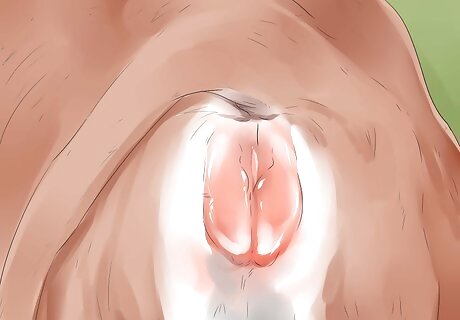
Clear discharge from the vulva. After noticing the signs in steps 1 to 3 above, you will also notice a clear mucus discharge from her vulva. This is the onset of the secretions starting in the cervix and vagina to help with reducing friction and aid in an easier birthing process.
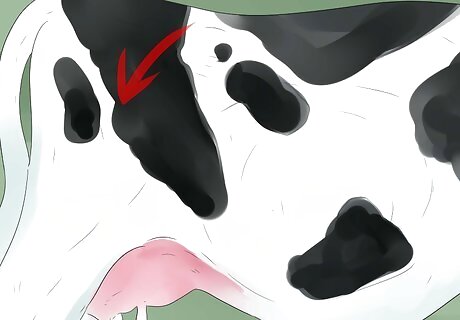
Sides sink in. The sides of the cow begin to sink in, and her belly appears to be more larger in the back than it was in the front.
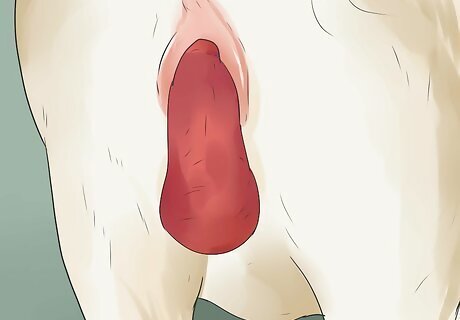
Expulsion of the water bag. The water bag is a yellowish-coloured sac that hangs down from the vulva, and is always the first to appear before the calf.
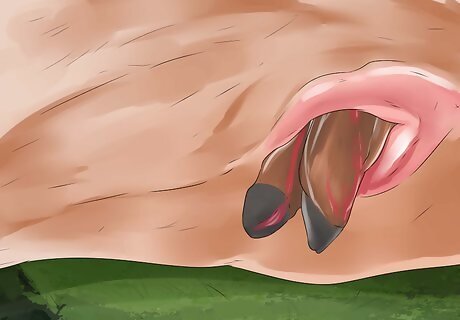
Feet and head appear from the vulva. If the feet are pointing down, then the calf is in normal position. Soon the nose will also start to show.
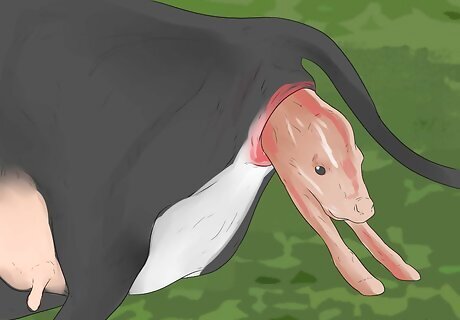
Shoulders appear, then the barrel and finally the hips and back legs. The calf is born! Congratulations!
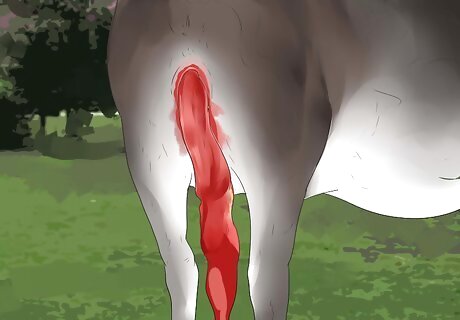
Reddish "gunk" and a sac appear within a matter of minutes to an hour after the calf is born. This "gunk" may stay on the rear of the cow for 6 to 12 hours, until her uterine contractions completely expel it. This "gunk" is the afterbirth, the remains of the placenta and fetal membranes.










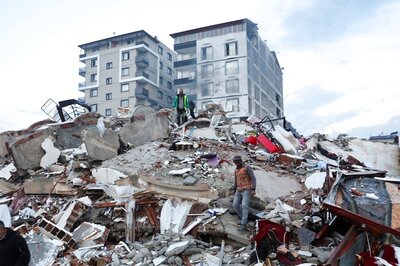









Comments
0 comment